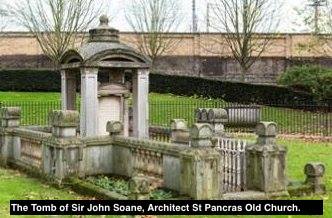SUMMARY
The K6 kiosk is identified as
Britain's red Telephone Box; in fact eight kiosk types were introduced
by the General Post Office between 1926 and 1983. The K6 was designed by
Sir Giles Gilbert Scott to commemorate the Silver Jubilee of the
coronation of King George V in 1935. Some 60,000 examples were installed
across Britain, which is why the K6 has come to represent the red
Telephone Box. Over 11,000 K6s remain and they are the most visible
examples of the eight kiosk types.
DESIGN
The K6 kiosk is constructed of
cast-iron sections, bolted together, standing on a concrete base. Its
general form is a four-sided rectangular box with a domed roof. Three
sides of the kiosk are glazed, with eight rows of three panes of glass;
a wide central pane of glass and two outer, narrow panes. There is reeded molding around the window panel corresponding to the dimensions
of the door opening, disguising that there is an opening on one side
only. The door is of teak, with a metal "cup" handle. For
weatherproofing there is a drip cap above the door. The back panel has a
blank, molded panel conforming to the dimensions of the windows, and
cable holes either side of the foundry plate at the foot of the kiosk.
Above the main body of the kiosk is a plain entablature, set back from
the face of the kiosk. The entablature carries a rectangular slot for
signage, with trim molding. Set into the slot is an illuminated
telephone sign, with serif capital lettering on opaque glass.
Ventilation slots are inserted below the signage slot. The roof of the
kiosk is domed, formed by segmental pediments, with a convex-molded
edge. The pediments carry a molded Royal crown.
Was Giles Gilbert Scott's iconic domed roof
design inspired by the graveyard tomb of Sir John Soane
,Architect, in St Pancras Old Church, behind St Pancras International
Rail Terminal.

|
HISTORY
The K6 kiosk was commissioned by
the General Post Office in 1935 to commemorate the Silver Jubilee of
King George V. The design needed to be suitable for universal use, not
repeating the mistakes of earlier kiosks. The K2 and K3 were attractive
designs but had proved problematic. The K2 was too large and too
expensive; the K3 too brittle. The General Post Office turned again to
Sir Giles Gilbert Scott, with his triumphant new kiosk appearing in
1936. Some 8,000 kiosks were installed as part of the 'Jubilee
Concession', allowing towns and villages with a Post Office to apply for
a kiosk.
A year later under the
'Tercentenary Concession' celebrating the Post Office's 300th
anniversary, a further 1,000 kiosks were installed over 12 years for
local authorities paying a five year subscription of £4. In 1939 a more
vandal-proof Mk II version was introduced. In 1949 the Royal Fine Arts
Commission intervened again, and bowing to pressure allowed rural
examples to be painted in different colours. Subsequently kiosks have
emerged painted in colours such as green and battleship grey. By 1960
some 60,000 examples existed, but the design was beginning to look
old-fashioned. The General Post Office was looking at a modern
replacement: the K7.
HERITAGE LEGACY
Between 1936 and 1968 60,000
examples of the K6 were installed. There are 2,260 separate listings for
the K6 kiosk with English Heritage and Historic Scotland. There are
approximately 8,400 non-listed K6 kiosks, giving a total number of
surviving K6 kiosks of approximately 11,700 (about 20% of all K6
kiosks). Of the eight kiosk types introduced by the General Post Office,
the K6 was the most populous type introduced, and the most populous type
in terms of surviving kiosks. The majority of listed kiosks,
KIOSK PARTICULARS
| Name |
Kiosk No.6 |
| Designed by |
Giles Gilbert Scott |
| Design Date |
1935 |
| Introduced |
1936 |
| Production Ended |
1968 |
| Construction |
Cast Iron Teak Door |
| Height |
8ft 0" |
| Width |
3ft 0" |
| Total Installed |
60,000 |
| Total Remaining |
10,700 |
|
